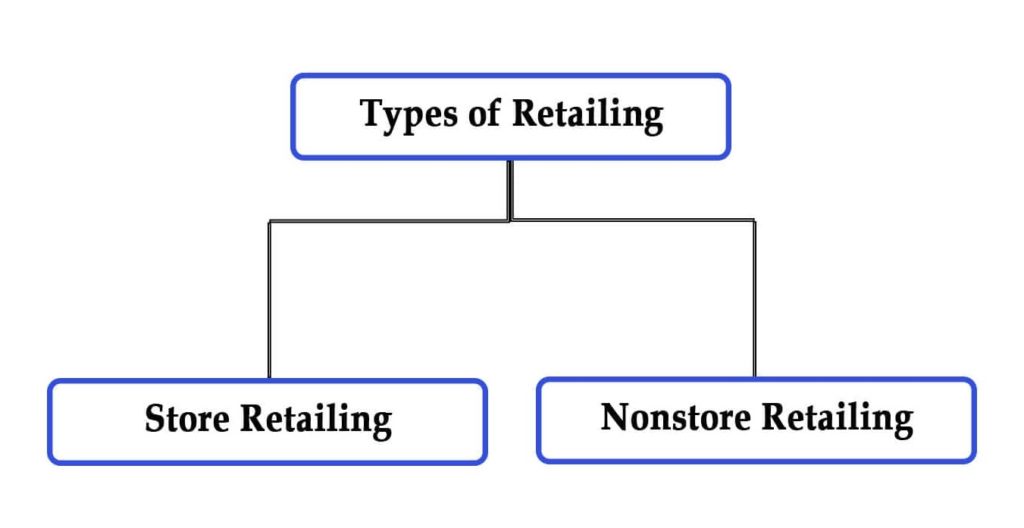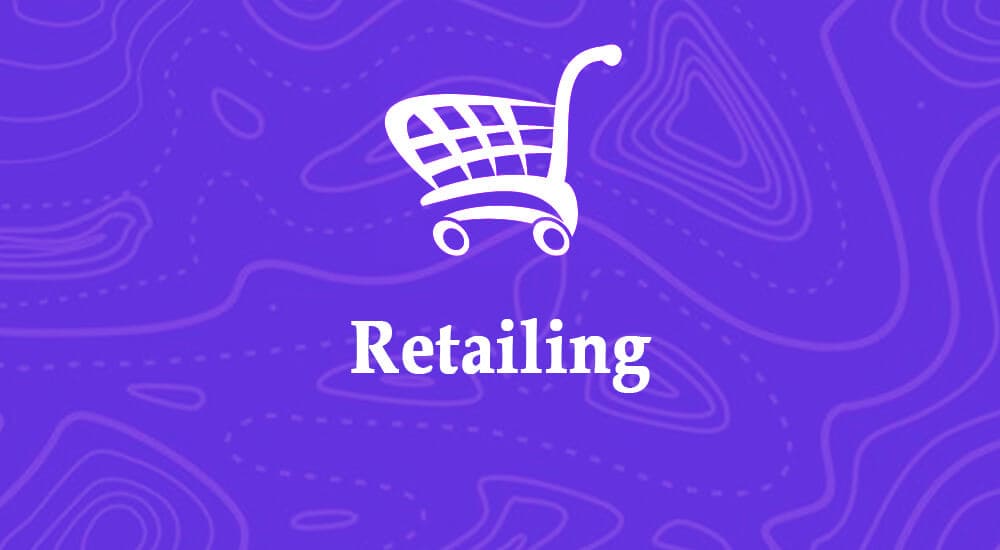Retailing is the process of selling goods and services directly to consumers. It involves all activities that connect products or services to the end users. Unlike business-to-business (B2B) transactions, retailing is strictly business-to-consumer (B2C).
To qualify as retailing, a business must sell to the end user, not another business. Retailers can be shops, online stores, or any organization selling directly to consumers. Retailers do not usually manufacture goods; they buy products in bulk from distributors or wholesalers and sell them in smaller quantities to individuals.
Retail transactions differ from wholesale, where businesses buy large quantities for resale. Wholesale is between businesses, while retail focuses on meeting the consumer’s needs.
Types of Retailing

Retailing is divided into two main types: store retailing and non-store retailing. Each type offers distinct methods of selling goods and services to consumers, catering to different preferences and circumstances.
1. Store Retailing
Store retailing is the most traditional and widespread type, where customers visit physical shops to make purchases. It can be classified into the following categories:
Amount of Service: Retailers differ based on the level of service provided:
- Self-Service: Customers independently browse, choose, and purchase products.
- Limited Service: Sales assistance is available for certain products.
- Full Service: Extensive support is provided throughout the buying process, often in luxury or specialty stores
Product Line Retailing: Stores are categorized based on the variety and type of products sold. Examples include:
- Superstores: Sell a wide range of goods, including groceries and non-food items.
- Specialty Stores: Focus on specific products or categories, such as electronics or clothing.
- Supermarkets: Primarily sell food and household goods.
- Hypermarkets: Offer an extensive range of products, combining supermarkets and department stores.
- Convenience Stores: Small outlets with everyday items.
- Department Stores: Organized into sections selling diverse product categories.
Relative Price Emphasis Retailing: Retailers focus on pricing strategies and customer affordability. Examples include:
- Discount Retailers: Offer products at lower prices than competitors.
- Catalog Stores: Provide products via catalogs, often at discounted rates.
- Off-Price Retailers: Sell branded products at reduced prices.
Control of Outlets Retailing: Classified based on ownership and management of the retail outlets:
- Independent Outlets: Operate individually and are not part of a larger chain.
- Voluntary Chains: Groups of independent retailers cooperating for bulk purchasing.
- Retailer Cooperatives: Retailers form cooperatives for better bargaining power.
- Corporate Chains: Centrally managed stores under one brand.
- Franchise Organizations: Retailers operate under a licensed agreement with a parent company.
2. Non-Store Retailing
Non-store retailing allows transactions outside physical retail locations, providing consumers with more flexible purchasing options. It is classified into:
Direct Marketing: Businesses reach consumers directly through methods such as:
- Email Marketing: Sending promotions or updates directly to inboxes.
- TV Advertising: Using commercials to highlight products.
- Social Media Ads: Leveraging platforms like Facebook or Instagram to target audiences.
Direct marketing has grown significantly, particularly after the global pandemic, as consumers increasingly shop online. It allows businesses to personalize marketing efforts and deliver content directly to audiences, minimizing competition by bypassing physical stores.
- Direct Selling: Sales representatives visit consumers’ homes to demonstrate products and take orders. Though less common due to advancements in online retailing, this method is still effective in certain industries like cosmetics and wellness.
- Automatic Vending: Machines are placed in public malls, offices, and airports. Consumers insert cash or cards to purchase snacks, beverages, or small goods. Vending machines are especially popular in developed countries, offering convenience and easy access.
By combining these types of retailing, businesses can cater to diverse consumer preferences and ensure broader market coverage.
Summary
Retailing serves as the final connection between products and consumers. Over the past decade, retailing patterns have shifted significantly, with online shopping becoming a dominant force alongside traditional store purchases. To stay competitive, retailers must adapt and embrace a combination of store and non-store strategies.
Leveraging physical and digital channels allows businesses to meet evolving consumer demands, ensuring they remain relevant and successful in a rapidly changing marketplace.
